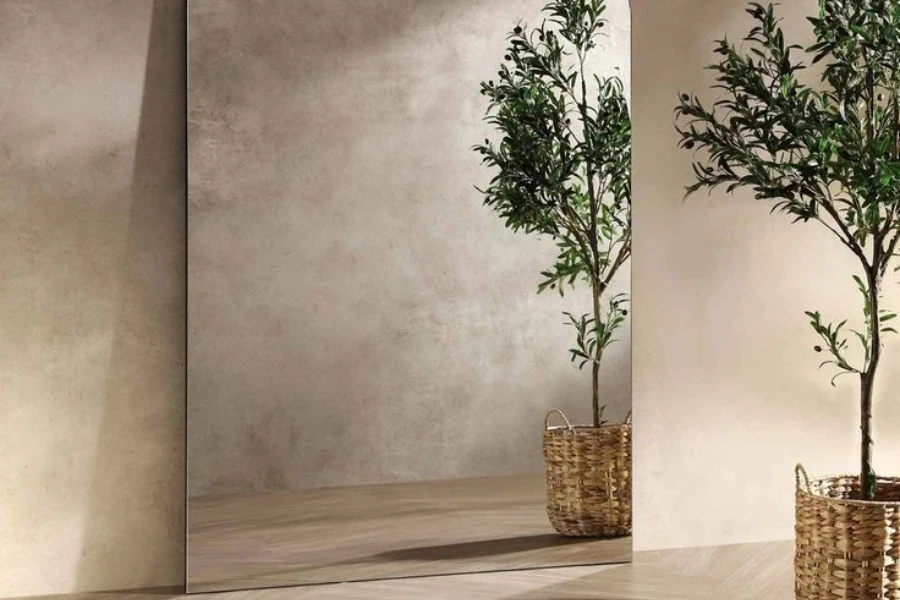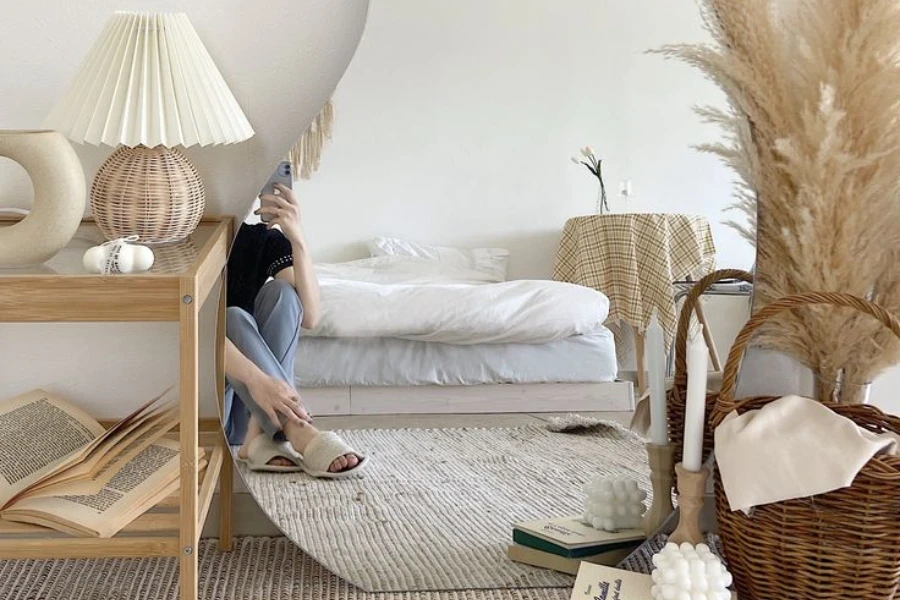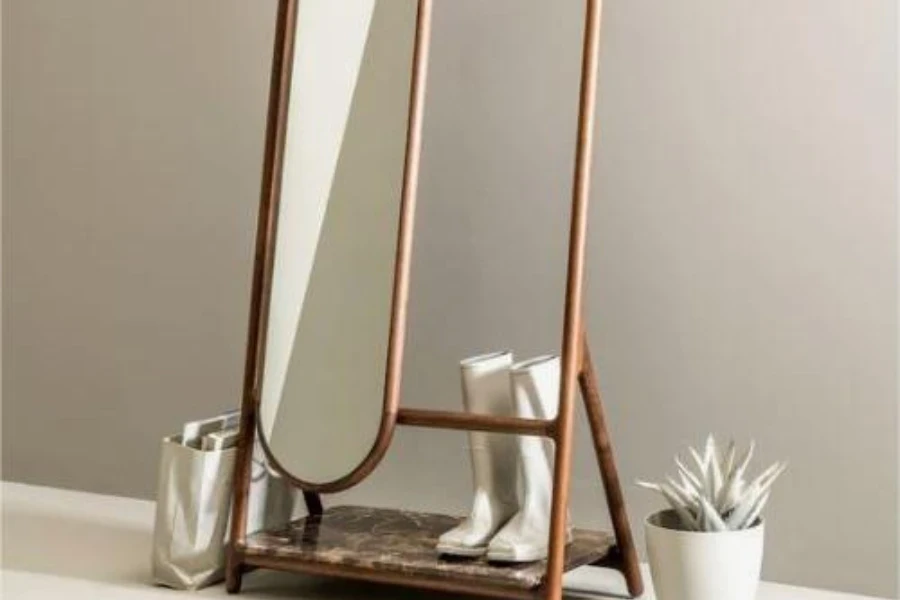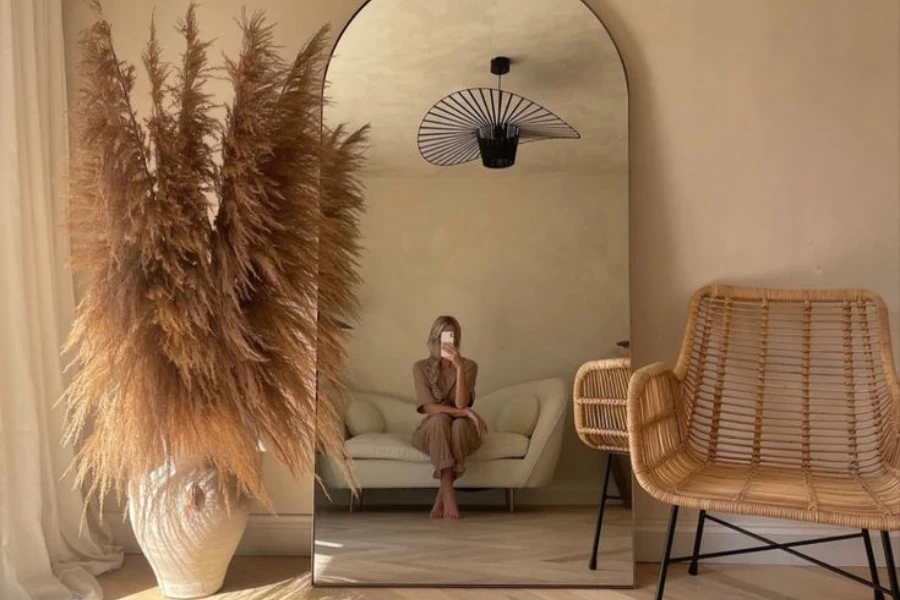As we step into 2024, the selection of a floor mirror transcends mere reflection; it’s a statement of style and practicality in home decor. The evolving market offers a diverse array of mirrors, each boasting unique features, and designs to suit varied aesthetic and spatial needs. Whether it’s enhancing the brightness of a room or adding a touch of elegance, the right floor mirror can dramatically transform any space. With the market brimming with options from minimalist Cheval designs to ornate, standing pieces, understanding the nuances of size, style, and functionality becomes crucial. This article guides you through the latest trends and essential factors to consider, ensuring that your choice not only reflects your style but also optimally complements your living space.
Table of Contents
1. Market overview
2. Different types and their features
3. Things to consider when selecting products
1. Market overview
The global mirror market, encompassing floor mirrors, has exhibited significant growth, showcasing a revenue Compound Annual Growth Rate (CAGR) of 7.8% from 2021. As of 2021, the market size stood at USD 122.04 billion, reflecting the increasing demand for mirrors in interior decoration and automotive sectors. The versatility of mirrors, especially in enhancing natural light in rooms and open spaces, has been a key factor driving this growth. The construction industry, valued at USD 22.04 trillion globally in 2020, significantly contributes to the demand in the mirror market, particularly in commercial and residential building projects.

A noteworthy trend in the mirror market is the rising adoption of smart interactive mirrors, especially in beauty and cosmeceutical applications. These smart mirrors, equipped with built-in cameras for skin analysis and augmented reality (AR) applications, are becoming increasingly popular in fashion and retail store chains. Moreover, the automotive sector’s interest in product diversification, particularly in intelligent rear-view monitoring systems (IRMS), aligns with the growing consumer demand for interactive and smart features in vehicles.
However, the market faces challenges such as fluctuations in raw material prices and competition from low-cost local mirror manufacturers. Despite these challenges, the market’s future looks promising, with increasing investments in housing and interior decoration projects, along with the growing importance of mirrors in automotive design.
2. Different types and their features
In the realm of interior design, floor mirrors are not just reflective surfaces; they are style statements. As we explore the landscape of floor mirrors in 2024, three distinct types emerge as frontrunners: the cheval, leaning, and standing mirror. Each type brings its unique aesthetic and functional qualities to the table, catering to diverse interior decor needs.

Cheval mirrors:
Named after the French word for ‘horse’, Cheval mirrors are characterized by their four-legged stands, offering stability and a touch of classic elegance. These mirrors, often adjustable, allow for a range of viewing angles, making them a versatile addition to bedrooms and dressing areas. Their design, rooted in 19th-century Parisian elegance, blends functionality with a timeless aesthetic. Ideal for rooms where a touch of sophistication is desired, Cheval mirrors often become focal points in the space they occupy.
Leaning mirrors:
Leaning mirrors, as the name suggests, are designed to rest against a wall. This type offers a contemporary, minimalist look that suits modern decor styles. They are particularly effective in creating an illusion of space, making them a favorite for compact urban apartments. The simplicity of their design – devoid of complex mounting or stands – allows for easy relocation and versatility in usage. Whether in a bedroom corner or alongside a living room wall, leaning mirrors add depth and a sense of openness to any room.
Standing mirrors:
Standing mirrors come with their own support, eliminating the need for wall-leaning or mounting. This type of mirror is synonymous with functionality and ease of use. Often featuring a self-supporting frame, these mirrors can be placed anywhere in a room, providing flexibility in interior design. They are particularly useful in spaces where wall support is not available or in rooms that undergo frequent layout changes. The standing mirror’s ability to move easily makes it a practical choice for dynamic living spaces.

Recent innovations in mirror technology have further enhanced the appeal of these types. Smart mirrors, with features like LED lighting, touch-screen capabilities, and even digital connectivity, are redefining what mirrors can do. These high-tech additions not only enhance the functionality of mirrors but also integrate them into the connected home ecosystem.
The choice between Cheval, Leaning, and Standing mirrors depends largely on individual style preferences, space considerations, and functionality needs. As the trends of 2024 unfold, these mirrors continue to play a significant role in shaping the aesthetics and practicality of interior spaces.
3. Things to consider when selecting products

Selecting the right floor mirror is a nuanced process that requires careful consideration of several factors to ensure that the product aligns with both functional needs and aesthetic aspirations.
Size and space availability:
The foremost consideration is the size of the mirror and the space available for its placement. A full-length mirror should ideally occupy about three-quarters of the wall where it is placed. This proportion ensures a balance between the mirror’s presence and the room’s overall aesthetic. In a commercial setting, such as a clothing store or a gym, a larger, frameless mirror is recommended to give a comprehensive view without the distraction of a frame. The size of the mirror should also be in harmony with the room’s dimensions to avoid overwhelming the space.
Frame, style, and thickness:
The frame and style of the mirror significantly impact its overall look and how it complements the room’s decor. A mirror’s frame can range from simple and understated to elaborate and decorative, depending on its intended placement and purpose. In living areas, an elaborate frame might add to the decor, while in more functional spaces like bedrooms, a simpler design could be more appropriate. Additionally, the thickness of the mirror is not just a practical consideration for durability but also influences its aesthetic integration into the space.

Budget considerations:
Setting a budget is a crucial step in the selection process. Floor mirrors are available at various price points, catering to different budgetary constraints. It’s important to balance cost with quality, as a good quality mirror can be a long-term investment. Websites and stores often provide a full estimate of the cost, including installation if applicable, making it easier for buyers to make an informed decision within their budget.
Mounting options and maintenance:
The choice between freestanding, leaning, or wall-mounted mirrors affects both the mirror’s functionality and the room’s layout. Each type has its mounting requirements and stability considerations. Proper installation is key to ensuring safety and longevity. Maintenance is another critical aspect, especially for preserving the mirror’s clarity and reflective quality. Regular cleaning with appropriate products and keeping the mirror dry, especially in damp environments, are essential maintenance practices.
In selecting a floor mirror, the interplay of these factors determines not just the mirror’s functionality but also how it enhances and complements the living space. It is a balance of practicality, style, and budget that ultimately guides the choice of the perfect floor mirror for any setting.
Conclusion
electing the right floor mirror in 2024 is a decision that intertwines style, functionality, and practical considerations. As mirrors continue to evolve as both functional objects and decorative elements, their thoughtful selection remains a crucial aspect of interior design, offering both a reflection of oneself and the space they inhabit. The journey to finding the perfect floor mirror is as much about reflecting personal style as it is about enhancing the living space. It is an investment in the beauty and functionality of one’s home, where each mirror serves as a testament to the homeowner’s taste and the evolving trends in home decor.




